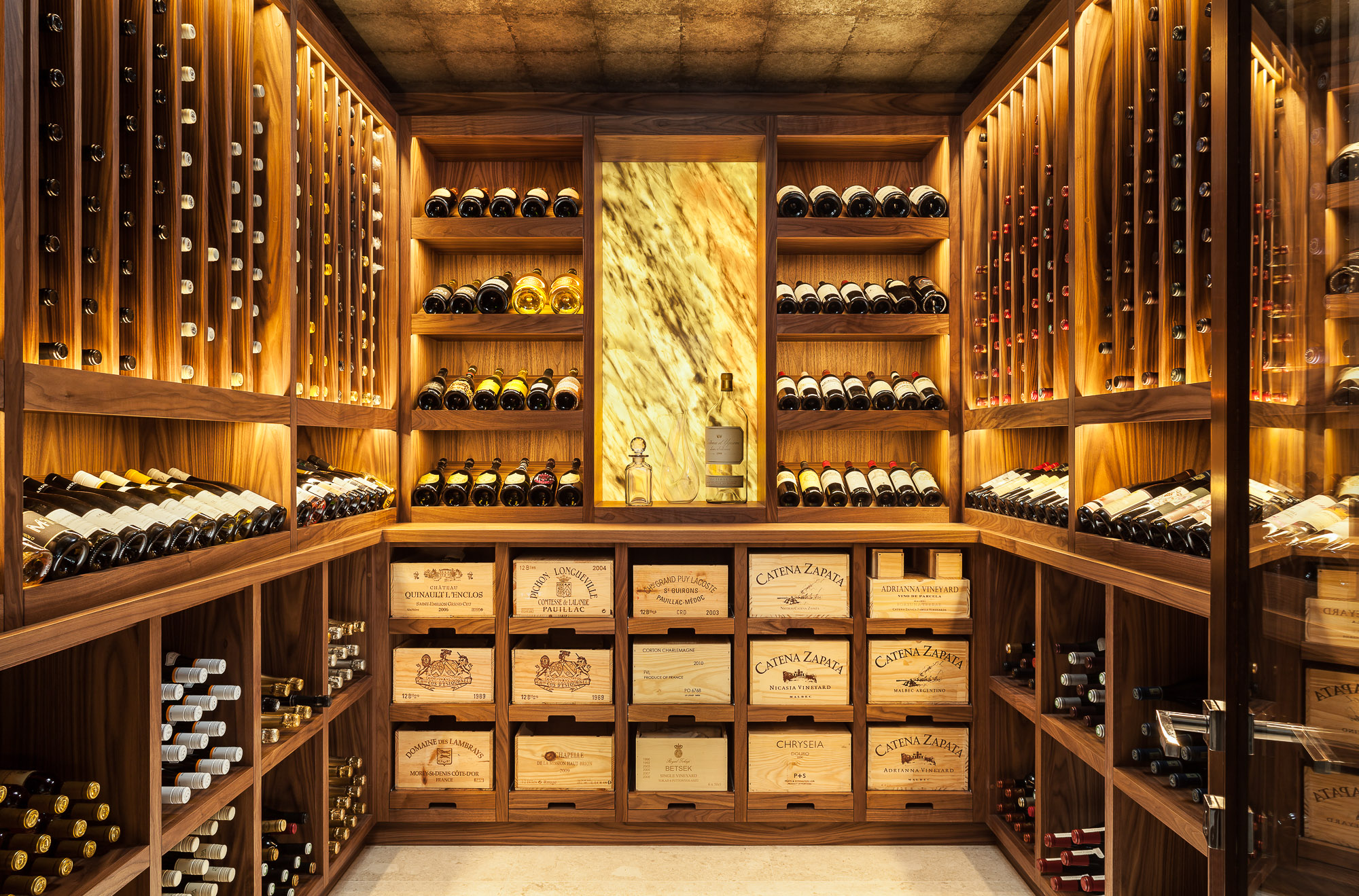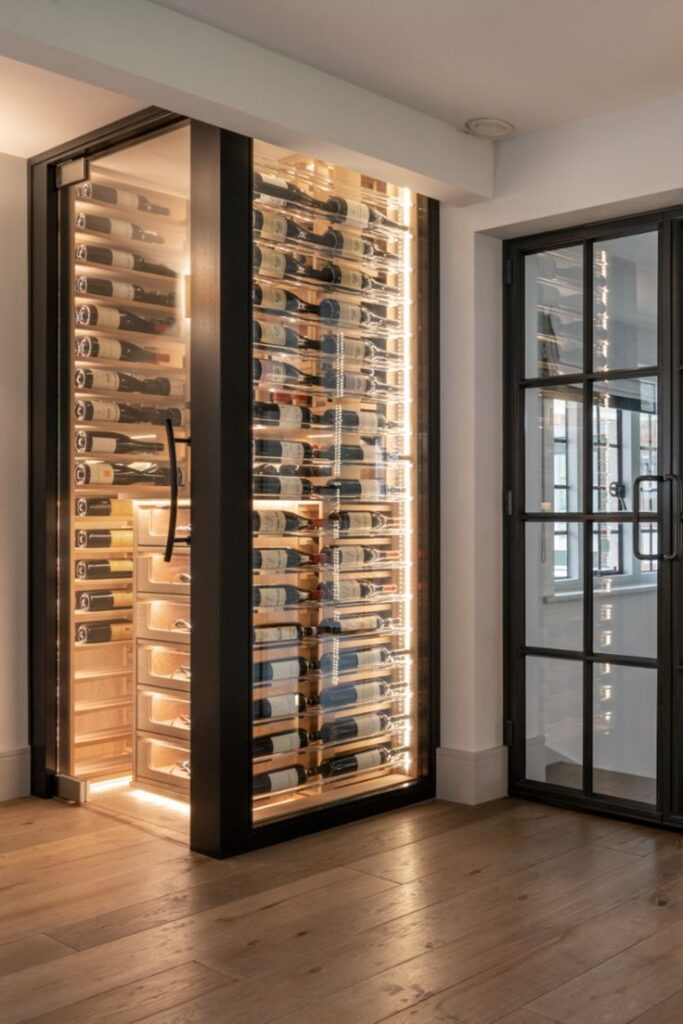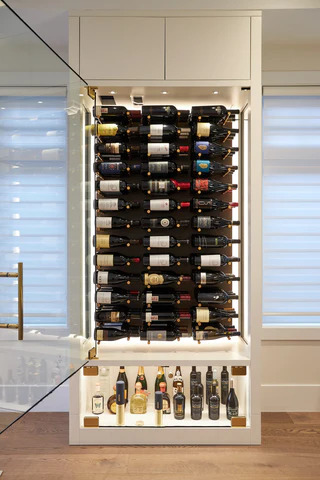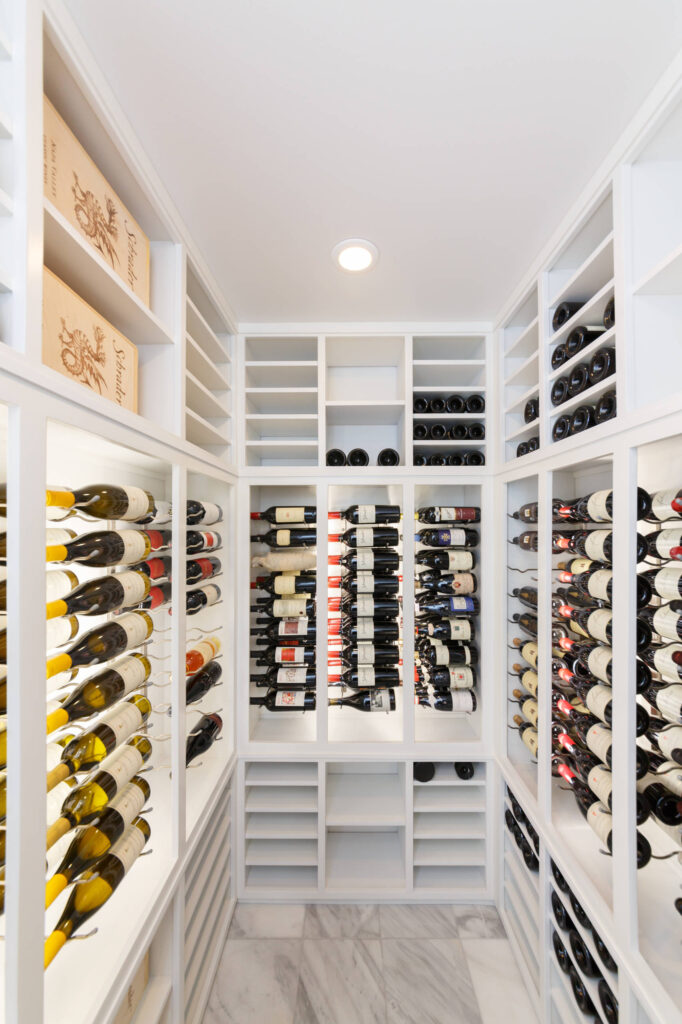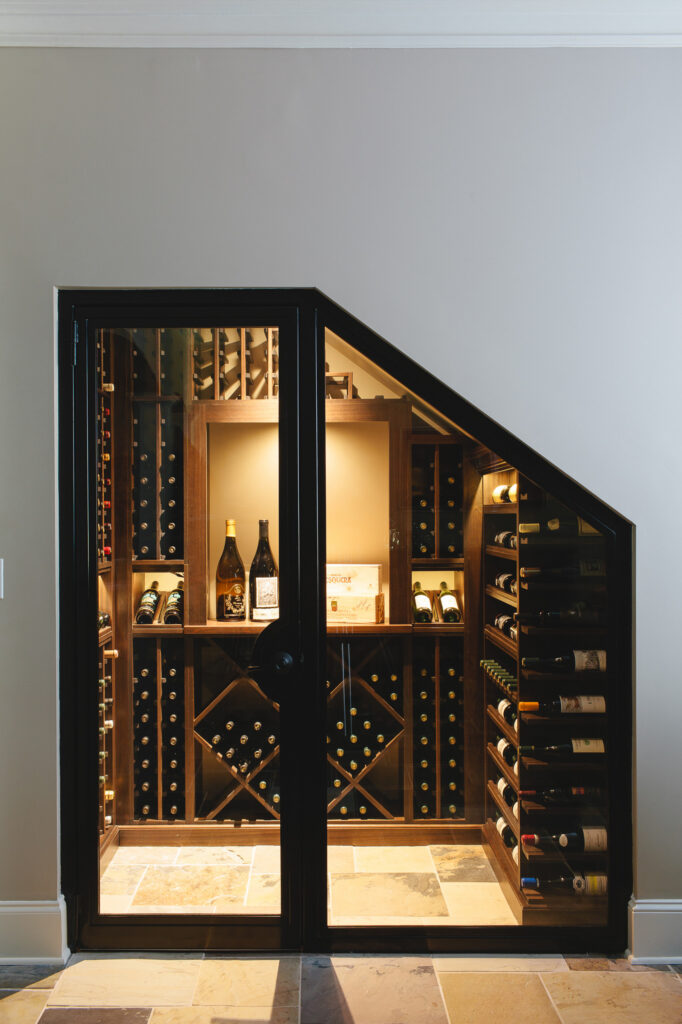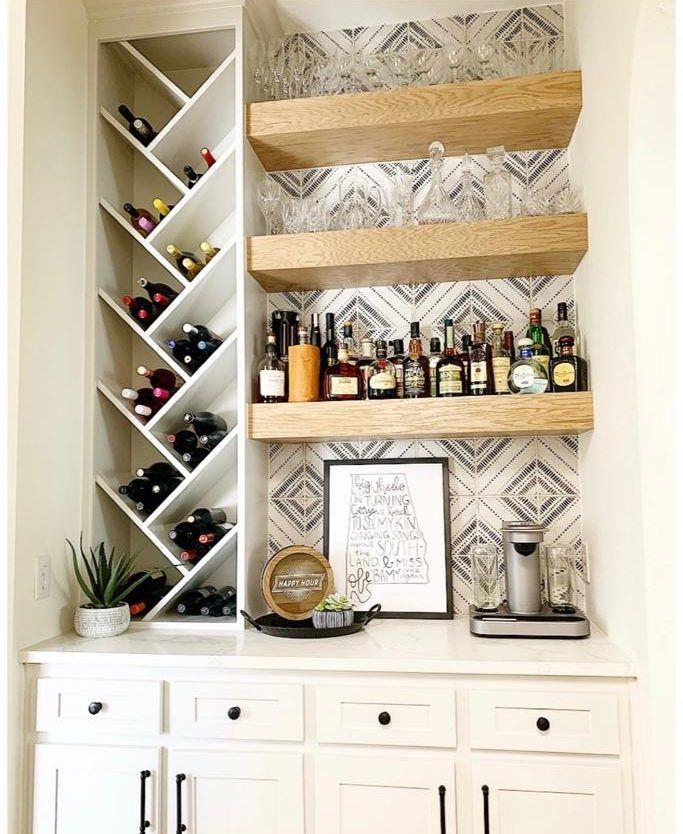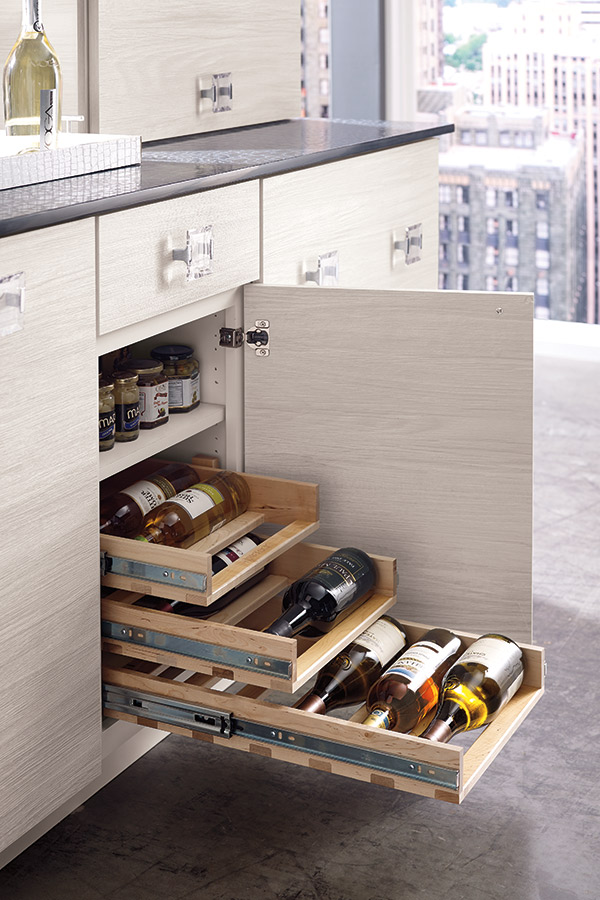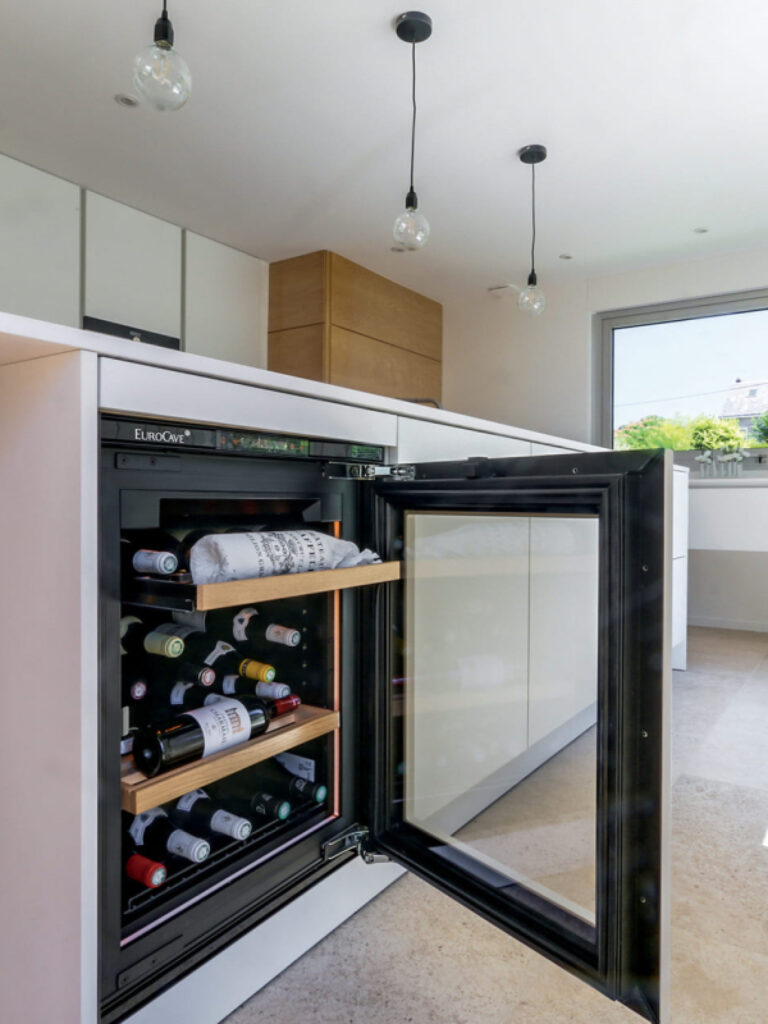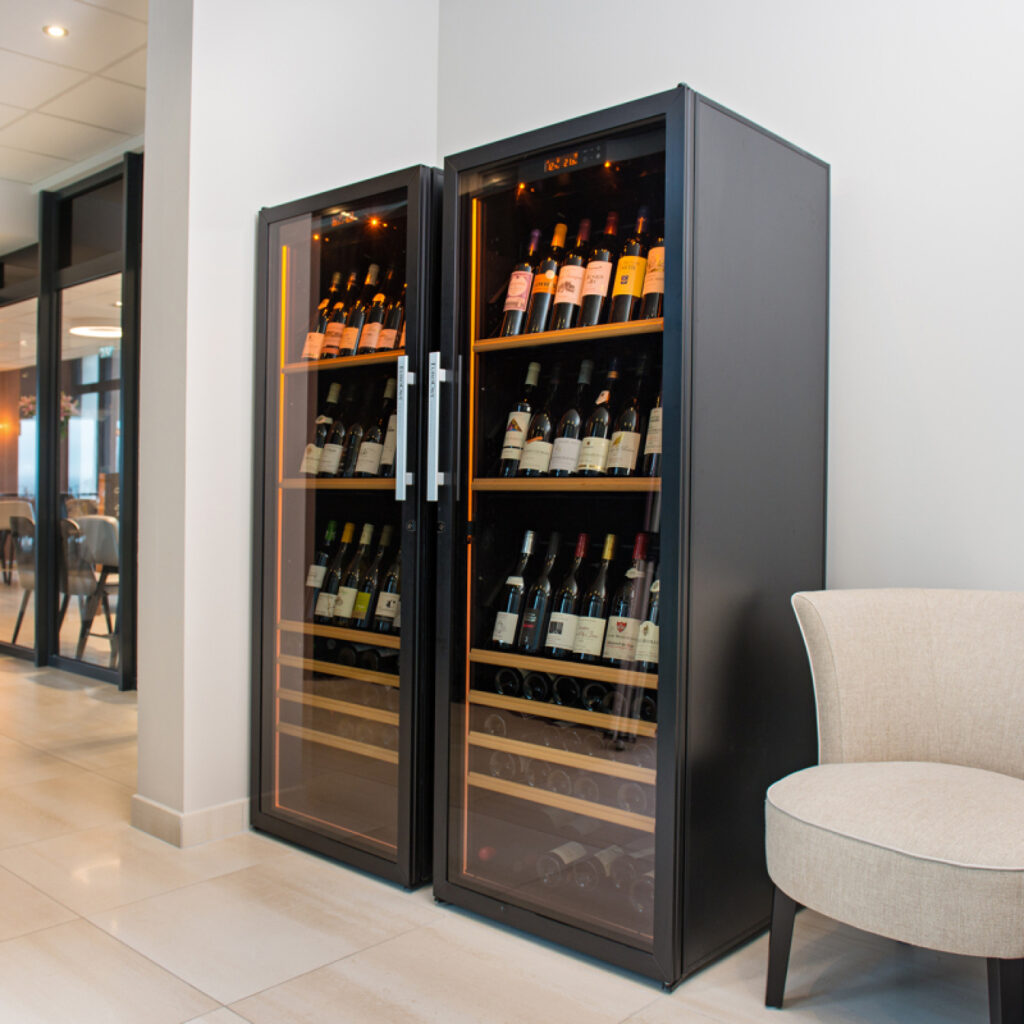-
With visits to wineries and wine-tasting a popular warm-weather activity, you may bring home one or more of your favorites to enjoy at home. While unopened fine wine (red wines, in particular) is known to have a long shelf life, the quality can be affected if improperly stored. Consider the tips below on how to bring the best out of your wines.
Light, Temperature, and Humidity
Wine doesn’t expire in the way that it will make you sick, but rather, the flavor perishes to the point of being less palatable. Prolonged exposure to sunlight’s ultraviolet rays is known to damage many things, and wine is no exception. Sunlight can cause a breakdown of the chemicals and molecules that make up the wine, thereby accelerating the aging process at an abnormal rate.
According to Wine Spectator, the optimal wine storage temperature is between 45 – 65° F. (The median of 55° F is noted as being close to optimal.) You want to keep your wines stored within this temperature range to preserve their aroma and flavor. Keeping the temperature range steady is also crucial. Wide temperature fluctuations can also spoil wines from within and cause corks to pop out, opening the wine.
Wines also favor humid (but not too humid) conditions, at around 65-70%. This is to prevent the cork from drying out and exposing the wine to air and oxidation. However, ensure the location is not overly damp, which can cause mold growth and peeling wine labels.
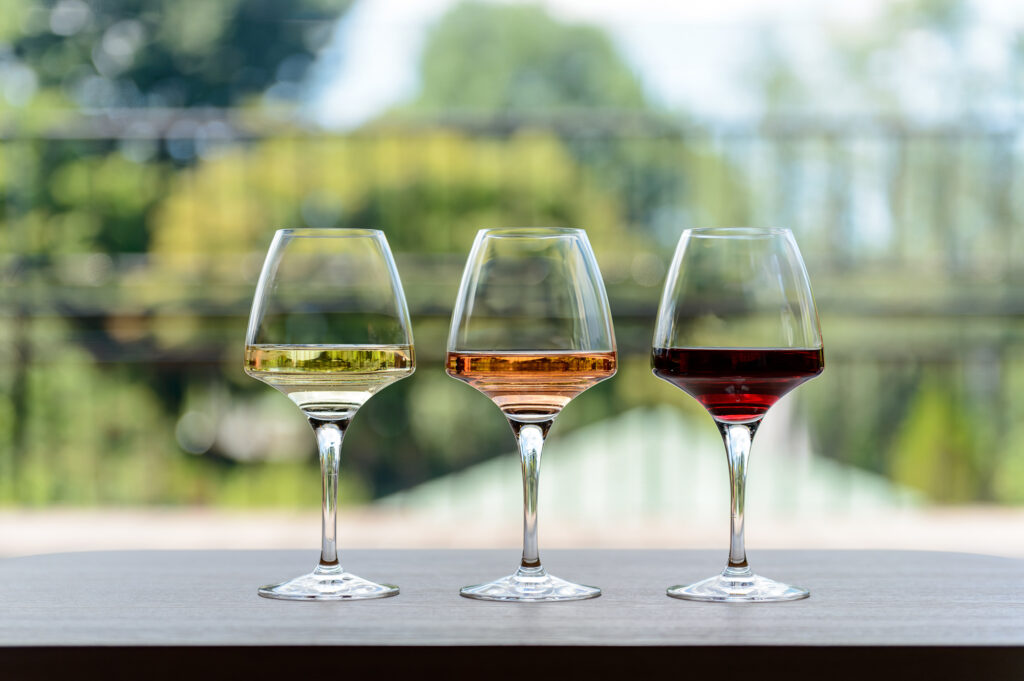
White, rosé, and red wine: red wine has the longest shelf life.
A Regular Refrigerator is Not Optimal for Long-Term StorageYour home refrigerator may be acceptable if you plan to drink your wine soon, but the consensus is that it is not great for prolonged storage. One reason is because of mechanical vibrations, which may disturb the molecules in the wine.
Another reason is that, at a temperature of 35-38° F, the refrigerator is typically too cold for wine storage. The humidity levels are also not optimal as it is normally kept at around 30%.
Solution #1: A Custom-Built Wine Storage Cabinet
Custom wine storage cabinets not only function as storage space, but they are also an aesthetic addition to your home. Many luxury homes make wine cabinets a design feature. These storage cabinets are also typically climate-controlled, so your wines are stored at optimal temperature and humidity levels. The options shown below have low-heat LED lights and feature glass doors, which makes the design appear extra luxurious.
Corner wine cabinet and a wine feature wall. | Sorrell Custom Wine Rooms and Blue Grouse Wine Cellars Solution #2: Go Big with a Custom-Built Wine Storage Room/Cellar
If you have an ample collection of wines, a cabinet may be too small for you. In that case, build a wine storage room with custom cabinets to store your wines!
A popular location for the storage room is underground or in the basement due to the cooler temperatures. But if your home does not have a basement, then a pantry adjacent to the kitchen is also a suitable location. Observe the traditional wine cellar and modern wine rooms shown below. If space is at a premium, then taking advantage of the extra area underneath the stairs is another clever idea.
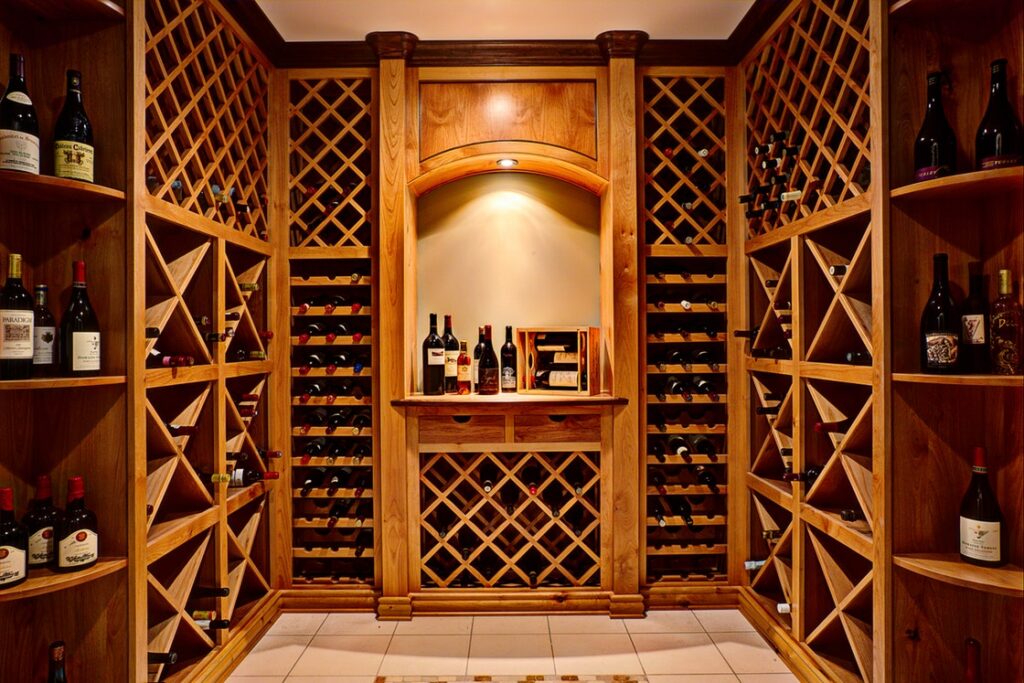
A traditional wine cellar. | BCD Homes A wine pantry and an under-the-stairs wine storage room. | Backsplash (Joseph & Curtis Custom Wine Cellars) and Houzz Solution #3: …Or Go Small with Kitchen Cabinetry Integration
If you are an occasional wine drinker who is looking for a compact storage solution, try integrating your wine storage into your existing kitchen cabinetry or butler’s pantry. A bar area will double as a decorative feature while pull-out wine drawers keep things organized and streamlined.
Built-in wine storage cabinet and pull-out wine storage drawers. | Crisp Collective and Diamond Cabinets How to Find the Best Wine Refrigerator
A wine refrigerator is a good option for aging wine and long-term storage. Similar to buying a home, there is no “one size fits all” when it comes to finding the right wine fridge. Although, thankfully, the process is a little simpler. Some considerations when purchasing a wine fridge include:
- What is your budget?
The cost of a wine cooler runs the gamut. Lower-end models, such as those made by well-known appliance brands such as Frigidaire and GE, will set you back a few hundred to a thousand dollars. But high-end models, such as those from specialty brands such as EuroCave, cost several thousand dollars, with their most exclusive models in the five digits. - Would you like a single, dual, or multi-zone fridge?
A single zone fridge is kept at a uniform temperature throughout the entire unit. A dual zone fridge has separate temperature controls designed for red and white wines. However, the partition and extra mechanism takes up storage space. Luxury models have more than two zones, allowing you to accomplish tasks such as bringing wine to room temperature before serving. - How large is your collection?
Just like regular refrigerators, wine fridges come in a variety of sizes. Some are as big as a full-size refrigerator, while others are compact and designed to fit in a lower cabinet space. - Do you desire manual climate-control features such as air filtration and humidity control?
Most wine fridges have built-in humidity control. However, manual controls are typically considered advanced features and will bump up the cost, with many models running thousands of dollars.
EuroCave is considered a premium wine refrigerator and wine cabinet brand. | EuroCave Wine Storage That’s Fit for You
Custom cabinets are one of our specialties! We have built a variety of wine storage areas, integrated bars in kitchen designs, and created custom wine cellars. Contact us and let us know what you are looking for and how we can help!
Showroom Hours:
M-F 10am-4pm
After hours and weekends by appointment only
Creating Beautiful Kitchens
and Baths for Over 30 Years.For a complete kitchen or bath remodel, new cabinets, refacing in wood or paint,
we have the products and expertise to serve you.
Showroom Hours:
M-F 10am-4pm
After hours and weekends by appointment only(916) 632-8299
2200 Sierra Meadows Drive, Ste. A, Rocklin, CA 95677
info@thecabinetdoctors.com
License # 779523- Roseville
- Rocklin
- Fair Oaks
- Sacramento
- Lake Tahoe
- Lincoln
- Folsom
This site is protected by reCAPTCHA and the Google Privacy Policy and Terms of Service apply.
© Cabinet Doctors . All Rights Reserved. Design By Elevate Public Relations.

